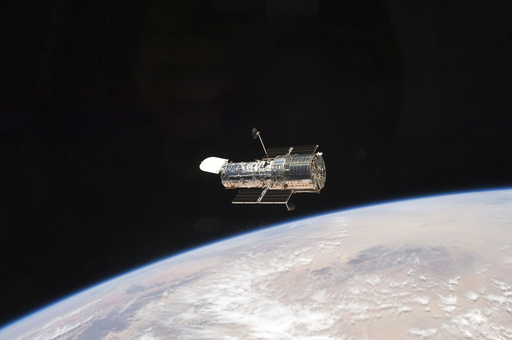CAPE CANAVERAL, Fla. (AP) — Hubble has run into more trouble.
The space telescope slipped into a hibernating state more than a week ago when one of its three remaining gyroscopes — part of the pointing system — malfunctioned. The same device had been acting up for months and disrupting scientific operations.
NASA said Tuesday that attempts to fix it failed and it will operate with just one gyroscope, which will limit its scientific capability.
The switch will keep Hubble idle until mid-June. The telescope won’t be as nimble as before and will take longer to zero in on targets. Hubble won’t be able to conduct as many observations, but should be able to keep making discoveries the rest of this decade and next, according to officials.
“We do not see Hubble as being on its last legs,” said NASA project manager Patrick Crouse.
The space agency is not considering a mission to boost the observatory to a higher orbit for now in order to extend its life, said Mark Clampin, NASA’s astrophysics director.
A billionaire who’s bought his own SpaceX flights had offered to sponsor and carry out the job. Clampin said the risks outweigh the potential benefits and that more analysis will be needed.
Hubble rocketed into orbit in 1990, but the jubilation quickly ended when scientists discovered its blurry vision due to a misshapen mirror. Repairs by spacewalking astronauts restored its eye on the cosmos, enabling the telescope to behold ancient galaxies and other jewels of the universe in stunning detail.
Hubble got six new gyroscopes during astronauts’ final visit in 2009, but three of them have not worked for years. The devices’ spinning wheels keep the telescope stable and looking the right way by tracking Hubble’s rotation and position in space.
One of the two remaining gyroscopes will be used for pointing, while the other remains in reserve for future use.
Hubble’s bigger and more powerful successor, the Webb Space Telescope, launched in 2021.
___
The Associated Press Health and Science Department receives support from the Howard Hughes Medical Institute’s Science and Educational Media Group. The AP is solely responsible for all content.
This website uses cookies so that we can provide you with the best user experience possible. Cookie information is stored in your browser and performs functions such as recognising you when you return to our website and helping our team to understand which sections of the website you find most interesting and useful.
